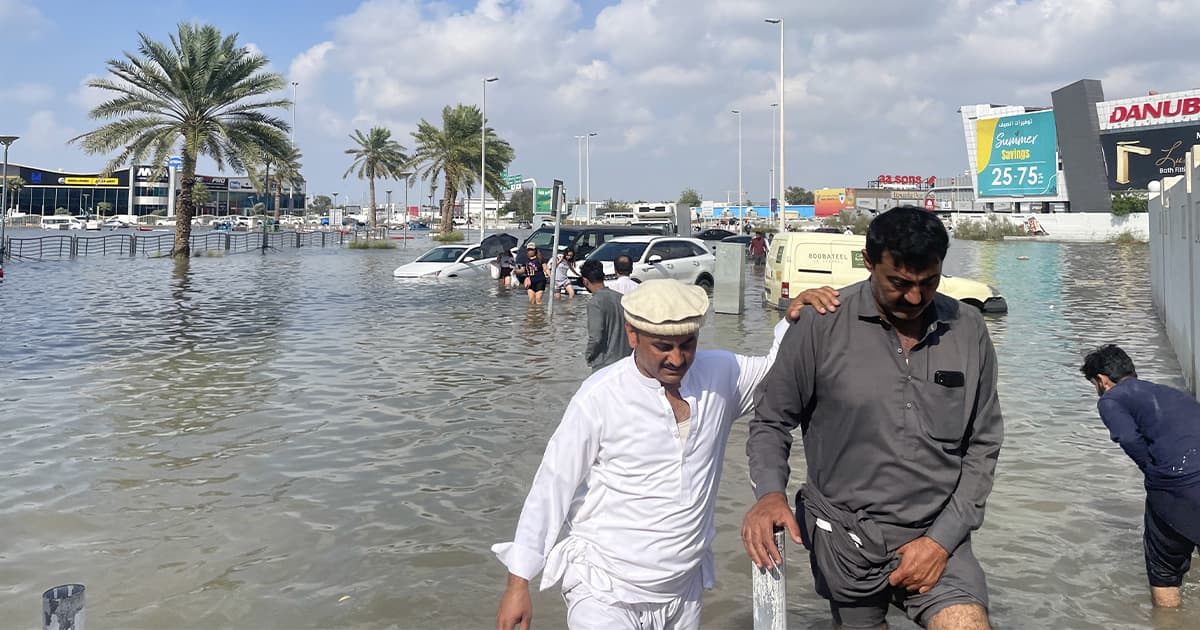After decades of cloud seeding — the practice, basically, of manipulating clouds to encourage rain — the United Arab Emirates is insisting that Dubai's historic flooding isn't related to its long-running weather modification experiments.
In a statement to The National, the UAE's state-owned English-language newspaper, a representative from the country's National Centre of Meteorology said that the government's cloud seeding planes, which introduce crystalline chemicals into clouds to increase rainfall, didn't approach the storm system brewing over the Persian Gulf earlier in the week.
"One of the basic principles of cloud seeding is that you have to target clouds in its early stage before it rains," the agency's statement read. "If you have a severe thunderstorm situation then it is too late to conduct any seeding operation."
In a separate report, Bloomberg pointed out that the UAE — which called the downpours "rains of goodness" — has conducted cloud seeding experiments to stimulate rain for decades. It also reported that although the state's weather modification planes weren't dispatched on Tuesday, when Dubai's storm started, they had gone out on Monday and Tuesday.
Scenes of flooding in Dubai after more than a year's worth of rain fell this week.
Eyewitness video shows airplanes parked on the flooded tarmac at Dubai International Airport. pic.twitter.com/48aCNoh0uk
— AccuWeather (@accuweather) April 17, 2024
As CNN notes, the unprecedented storm that shut down the Dubai airport and resulted in at least one death thus far has seen the greatest rainfall in the region for 75 years. Some areas got as much as 10 inches of rainfall within 24 hours, which for a desert country unequipped for such precipitation has been devastating.
With heavy rains gripping the entire region for weeks, there have been more deaths in the neighboring country of Oman, where flash flooding led to the demise of 18 people, including schoolchildren, per that country's emergency management service.
In estimation of Wired, where reporters have for months been preparing a project on the Emirates' cloud seeding operations, this flooding seems to be less about weather control and more about infrastructure and climate change.
"It’s exciting to point the finger at a scary technology, but the real cause of the flooding is likely more banal: Dubai is comically ill-equipped to deal with rainfall," Wired's Amit Katwala wrote. "The city has expanded rapidly over the past few decades, with little attention paid to infrastructure like storm drains that could help it deal with a sudden influx of water. It’s largely concrete and glass, and there’s very little green space to soak up rainfall. The result is chaos whenever it rains — though to be fair, most cities would struggle to deal with a year’s worth of rain falling in 12 hours."
Add in climate change altering the region's "complex weather dynamics" and you have, well, a perfect storm.
"City planners around the world are trying to make their cities 'spongier' to help deal with flash flooding and save more water for drier parts of the year," Katwala continued. "Instead of using cloud seeding to turn the sky into a sponge, Dubai would be better off trying to turn the city into one."
More on climate: The UN's Climate Chief Says We Have Just Two Years to Save the Planet
Share This Article
